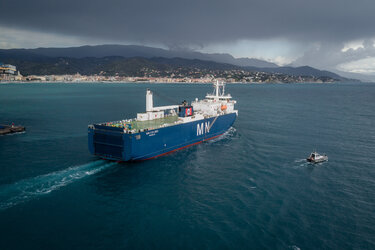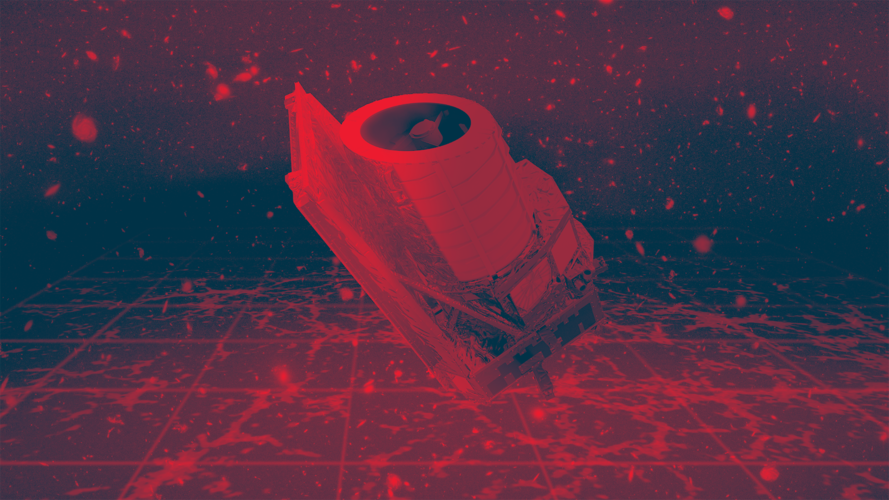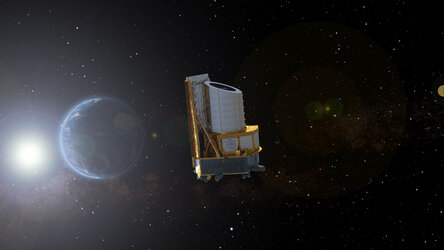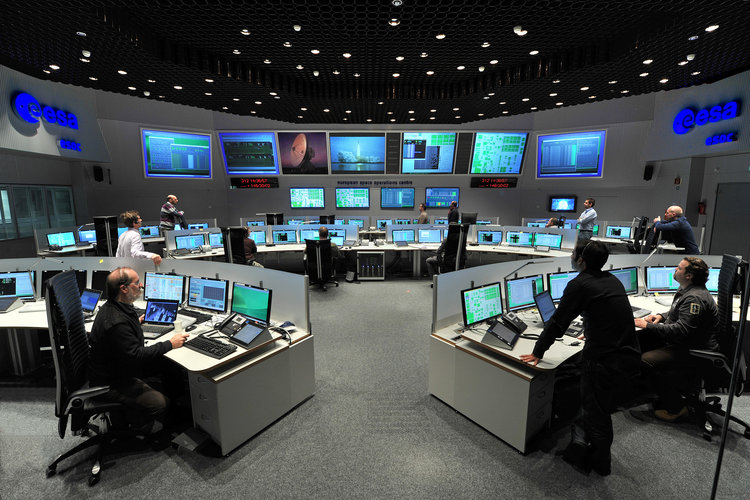What’s the (dark) matter with Euclid?
In brief
Euclid is ESA’s mission to shed light on dark matter and dark energy, but teams at the Agency’s mission control centre in Darmstadt, Germany, are also in the dark. A series of problems have befallen the mission in pre-launch simulations.
In-depth

Currently about halfway through the Euclid simulations campaign, the key focus in the Main Control Room is the Launch and Early Orbit Phase (LEOP) and spacecraft commissioning.
These are the two most critical moments in a mission’s life; as it wakes up after the rigours of launch, makes its first manoeuvres towards its target destination and as its instruments are commissioned.
Stress as Euclid thrusters fail
Joe Bush, Simulations Officer for Euclid, has spent months meticulously planning all the ways that Euclid could fail. From problems on the spacecraft to human issues like team cohesion, confidence and morale.

You’d be forgiven for thinking, that on 23 March this year, he went too far. Joe broke not just one, but two sets of thrusters on the Euclid spacecraft simulator. It was up to the Flight Control and Flight Dynamics Teams to decide which they could and should use.
“All of a sudden, a suspected mechanical failure meant one of Euclid’s attitude thrusters was stuck shut, producing no force at all, forcing us to use the backup set of thrusters. But then, the orbit control thrusters, part of that backup set, began behaving strangely, one overperforming by 10% and the other underperforming by the same amount,” recalls Tiago Loureiro, Euclid Flight Operations Director.

The team discussed a potential hybrid solution that would make use of both sets of thrusters, but for this, there was no procedure in place, and to create one would require input and advice from the Science project at ESA's Technical heart (ESTEC) and industry partners. While not involved in this earlier simulation, these teams have now joined simulations and of course, will be on hand throughout Euclid’s life in space.
“I wanted to get the teams used to making decisions under serious time pressure, and having two faulty sets of thrusters certainly did that”, explains Joe.
“The double-thruster nightmare scenario underscored how successful mission operations include a wide array of experts and specialists, able to support and brainstorm with our Control Teams for the plethora of potential issues that can arise.”

Tiago adds to this; “The simulations campaign is all about teamwork - nobody can fly a mission on their own. Knowing who or what to rely on for knowledge and advice, and when, for supporting us on those high-stakes decision-making moments, is an important skill in mission operations, but also in life!”
It would be unlucky for something like this to happen for real, but it’s certainly not impossible. Whether it’s Euclid’s thrusters, solar arrays or any number of other critical spacecraft components, the teams’ ability to keep cool yet decisive in the midst of a serious problem, to know who to call in and rely on at what time, will be vital for mission success.
Engineers to cajole a sensitive soul
Euclid’s exceptionally sensitive 1.2-metre telescope will capture light that is ten billion years old, originating from the early Universe and only now reaching us. In doing this, it will shed light on a simple question for which we still don’t have an answer: what is the Universe made of? Amazingly, this is today a cosmic mystery.

The matter we’re made of and the light that lets us see, constitutes just 5% of the Universe. The rest is dark: with dark energy making up about 70% and dark matter the remaining roughly 25%.
But what are dark matter and dark energy? Euclid hopes to find out, yet its instruments are only as sensitive as the operations allow them to be. Engineers at ESA’s mission control will need to protect the unshielded telescope during and after launch, ensuring no direct sunlight touches it. They will then have to calibrate and point the spacecraft with extreme precision, to ensure it can clearly see.
From launch to Lagrange
Euclid will launch on a SpaceX Falcon 9 rocket from Cape Canaveral, Florida, USA, no earlier than July. A trajectory correction manoeuvre will nudge it to ‘Lagrange point 2’ - one of five points around the Sun and Earth where the gravitational forces between the two bodies balance out, creating gravitational ‘plateaus’ around which objects can orbit, stably, without too much work to keep them in place.

Euclid will join ESA’s Gaia telescope here at L2 and the NASA/ESA James Webb Space Telescope. From an average distance of 1.5 million km beyond Earth’s orbit, it will beam a record amount of data back to Earth via ESA’s Estrack network of ground stations across the globe, precious details on the early Universe and its evolution.
All of this will be rehearsed in the ongoing simulations taking place at ESA’s ESOC mission control centre, first with local teams and later bringing together science teams at ESA’s ESTEC technical heart, SpaceX, ground stations and Thales Industry partners.
Follow @esaoperations for updates on Euclid simulations and launch preparations, as teams are tested with dozens of worst-case scenarios while Euclid is on Earth, in preparation for the unknown of space.















 Germany
Germany
 Austria
Austria
 Belgium
Belgium
 Denmark
Denmark
 Spain
Spain
 Estonia
Estonia
 Finland
Finland
 France
France
 Greece
Greece
 Hungary
Hungary
 Ireland
Ireland
 Italy
Italy
 Luxembourg
Luxembourg
 Norway
Norway
 The Netherlands
The Netherlands
 Poland
Poland
 Portugal
Portugal
 Czechia
Czechia
 Romania
Romania
 United Kingdom
United Kingdom
 Slovenia
Slovenia
 Sweden
Sweden
 Switzerland
Switzerland


































